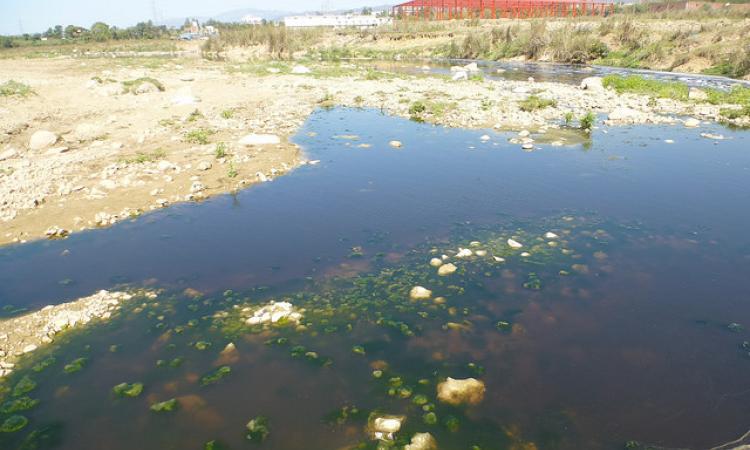
When Satya Devi was a child, the open well near her house in the village of Malku Majra was the water source for the household. She reminisces, “The water was clean and soft. The well would never go dry. Once when there was a drought, we went to the bed of the Sirsa river, dug a few holes in the bed and got clean water to drink.” Things have clearly changed for the worse. In the last decade or so, Satya has not used the water from her well. “It smells and looks bad,” she says. While Satya would not elaborate on the reason for the decline in water, her neighbour Baldev Singh is more forthcoming. “It is because of the Mortein-Brown factory,” he says. “A few years after it came up, the water started smelling bad. We cannot drink from the well now.” Complaints about the water quality are quite common in Satya’s village located downstream of Himachal Pradesh’s pharmaceutical production area.
Located in Solan district in the south of Himachal Pradesh, the Baddi-Barotiwala-Nalagarh (BBN) belt is the largest industrial area in the state. It was established in 2003 when subsidies were granted for setting up industries. Within a decade, the area had nearly 40,000 units. Pharmaceutical industries thrive in this area which is referred to as the “pharmaceutical hub”. The units here produce 40 percent of the domestic demand. 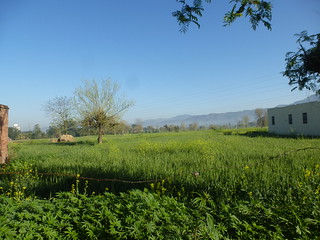
Changing landscape and lives
Prior to 2003, however, the area was predominantly agricultural. The 115 villages here still practice agriculture, though it is diminishing. Many residents claim that the demographics of the area have changed considerably in the last two decades. While earlier, the villages had only farming families, a large number of people have shifted to working in the factories now. This has led to a corresponding shift in the lifestyles of the residents.
Now, most of the families here have an alternative means of livelihood, largely linked to the industrial area. Karam Singh, a resident of Akanwali, says, “Several of them lease out rooms to industry staff while many others work as support for the industrial estate by driving trucks on a contract. This has meant that fewer people are available to till the lands.” It is possible that the lack of labour to work in the fields has contributed to monocropping.
Nartara Ram and Rambhore, both farmers in the industrial area, say that since family members are no longer available to till the fields, they have taken up mechanised agriculture. Jagdish Singh, another farmer in the area, directly links the decline in rice crops to its “labour-intensive” nature.
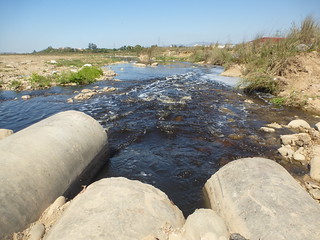
Water quality declines
When it comes to drinking water, water quality is an issue. Bad taste and smell are often reported. Most people date the time of the water quality decline to the start of the industrial estate. In April 2014, the HimParivesh Environment Protection organisation and Himdhara organised a people’s public hearing in the BBN industrial area. At that time, they received 85 written and oral submissions testifying to the environmental damage by the industrial units in that area. Most submissions named a specific factory and its impact on their water source.
Government departments disagree. At the public hearing, the representative of the pollution control board denied that industrial pollution was the cause of people’s problems and instead, attributed it to the vehicular movement. The Irrigation and Public Health (IPH) Department, responsible for supplying water to the area stated that they monitor groundwater quality and have not recorded any problems. Residents of the Gullarwala locality of the BBN industrial estate had reported problems with the quality of water supplied by three tube wells owned by the IPH. These had been investigated but IPH did not find any problems in the quality.
Atul Parmar, assistant environmental engineer of the state pollution control board (SPCB) says, “There is no possibility of contamination of local water resources due to the industries. Not all industries can be considered to be water polluting. The industries whose processes may pollute water need to construct an effluent treatment plant (ETP). Factories are only given permission to operate after the ETP is installed. A majority of industries, about 1200, do not pollute water.”
Parmar also explains the measures being taken by the government to mitigate pollution at the estate. For the infrastructure at Baddi, Rs 55 crore was given by the Centre, while the SPCB’s contribution was Rs 2.5 crore. Baddi infrastructure has now laid a pipeline that connects water polluting industries within a command area to a common effluent treatment plant or CETP. These industries are connected either through a 65-km-long pipeline or by means of tankers. The CETP is the only one in the country with stream segregation technology.
However, only half of the industries in the hub use it which made the Himachal high court to direct the state government to file a status report on pollution in the region in 2016. Similarly, the SPCB’s claim that there is absolutely no pollution from the industries is belied by the state of the streams and wells in the area as well as the acidity of the Sirsa river. When tested by a team from the People’s Science Institute, the pH of the river downstream of the industrial estate was 3.6, indicating high acidity.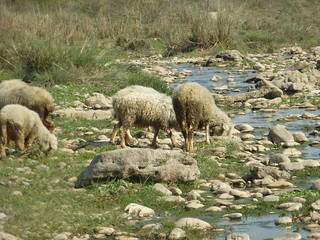
Sirsa river suffers
A decade ago, it was a common practice during drought to obtain water by digging shallow holes in the bed of the Sirsa and tapping into the subterranean flow. This has now been discontinued due to the pollution in the river. Livestock, however, continues to drink this water. The cumulative effect of drinking this water on the meat and milk of the animals need to be assessed.
Villages along the main Baddi road have also begun to witness astute marketing by the manufacturers of RO purifiers. Jagdish says, “Shortly after the industrial estate was set up, salespersons from these companies visited us and tested the water. They pointed out that the water sources were contaminated by the industries and so the water was unsafe. They recommended RO purifiers. We have installed one, and so have some others.”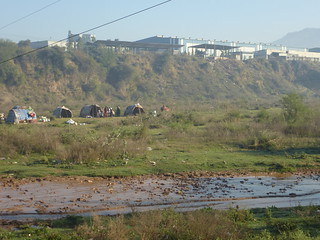
The IPH department maintains a list of the government tube wells installed in the BBN area for domestic and agricultural use. The first set of tube wells was installed 40 years ago. The average depth of the wells now is 150 metres, though the wells in Nalagarh are deeper. The industries use their own tube wells which are not monitored. The IPH department, consequently, has no information about groundwater use by industries. However, residents allege that groundwater levels have gone so low that irrigation by open wells is no longer possible. This has led to the burgeoning of an informal water market in the area. Farmers who are able to dig deep borewells make a living by selling their water at Rs 100 per hour of pumping.
Three years after the public hearing, the pollution continues. As seen by Parmar’s statements, nothing has changed in terms of the pollution control board’s acceptance of the industrial estate’s culpability in the matter of groundwater pollution in the area.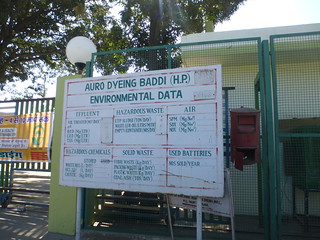
The industries do not share information with members of the public or allow them to enter the premises. They also do not share details of water extraction with the IPH department. The reports submitted by the companies say there is absolutely no oversight of industrial water and waste management. There is, therefore, a considerable divide between the residents and the industries, with the government departments unable or unwilling to do anything beyond the minimum oversight required by the letter of the law.
Irreversible damage
Once contaminants enter an aquifer, it is a long and expensive process to reduce them. The same is also true of removing contaminants from polluted surface water bodies. The only feasible option is to prevent pollution at the source; with the industries in question taking an active interest in scrupulously preventing any contaminants from entering the environment. And this is why the lack of oversight of the industries is challenging. Unless forced by law or by profit, industries do not concern themselves with the environmental pollution caused by their own functioning--a fact recognised by Commissioner James Quigley of the Federal Water Pollution Control Administration (FWPCA), the USA remains as true today as it was in 1966.
Despite this, an attempt is being made to introduce a negotiated and participatory management of groundwater in the area.This approach entails a cooperative mapping of groundwater use and availability and the creation of a plan for its use and recharge. For this, the first step is for the various groups in the region to acknowledge that they have common interests and needs. Dr Anil Gautam of the People’s Science Institute explains, “Everyone needs water. All the people involved here, whether industries, farmers, or individuals, are dependent on the same groundwater. It is in everyone’s interest to manage it properly.” The organisation is now planning to introduce participatory groundwater management in the area and initiate dialogue between the three disparate groups of citizens, industries, and government departments. Will they succeed?